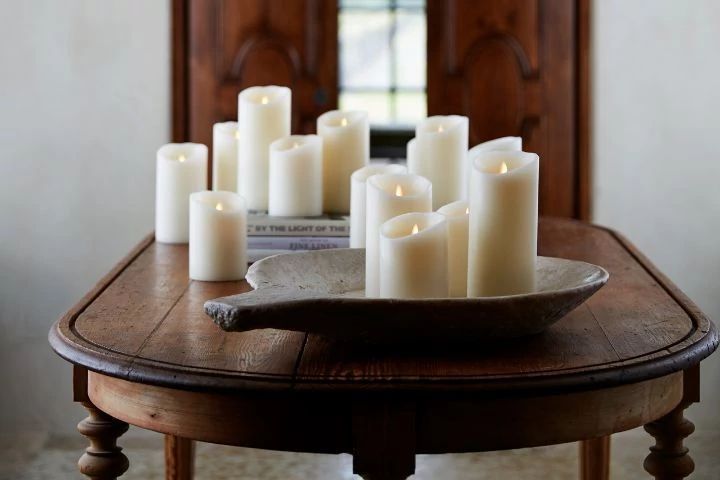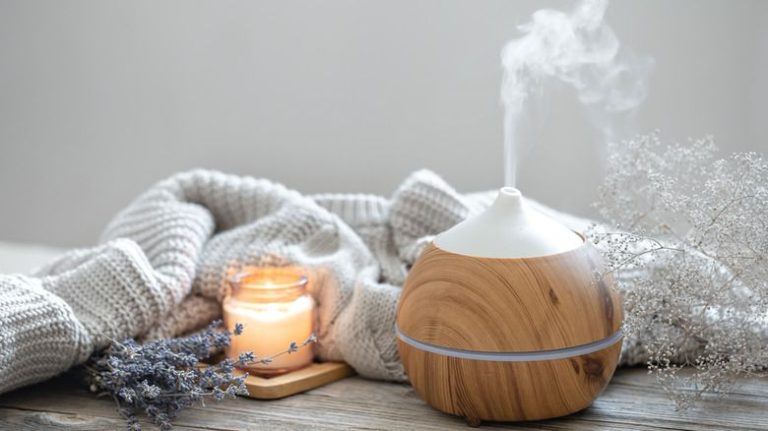Is Candle Light Flattering?
Candlelight has an undeniable allure. The warm, delicate glow of a candle flame is pleasing to the eye and helps create an inviting ambiance. But is candlelight actually flattering, or is that just a romantic myth?
Candlelight flatters by softly illuminating faces and placing an attractive glow on skin. Unlike harsh overhead lighting, candlelight casts a diffused radiance that minimizes flaws and brings out people’s best features. The flickering flame also adds visual drama and interest. From romantic dinners to special occasions, candlelight sets a mood that makes everything look a bit more beautiful.
This article will examine the qualities of candlelight that make it so flattering, from the warm color temperature to the dynamic flames. We’ll uncover why candlelight has long been associated with beauty and romance across many cultures and eras. While tastes differ, there are compelling reasons why candlelight tends to be preferential when it comes to enhancing natural attractiveness.
History of Candlelight
Candles have been used as a light source for thousands of years, dating back to ancient times. Before the invention of electric lights in the 19th century, candles were one of the main ways that people illuminated their homes and workspaces after dark. The earliest candle-like objects were made from plant and animal fat wicks that were inserted into natural hollow shapes like seashells, stone, and carved wood. The ancient Egyptians developed more sophisticated candles using beeswax as early as 3,000 BC. Candles then spread to ancient Greece and Rome, where they were primarily made from tallow. Candle making evolved across many cultures and regions, with various waxes, wicks, and production methods developed. By the Middle Ages, candle making had become an established craft across Europe. Candles were used extensively during the Renaissance beginning in the 15th century. The English began commercial candle making starting in the 13th century, crafting candles from animal fats. Beeswax candles were luxury items found in the homes of royalty and churches. The advancements of the Industrial Revolution in the 1800s enabled the mass production of candles, making them more affordable and abundant light sources. Candles remained essential for home and commercial lighting well into the 1800s until the invention of gas lighting and ultimately electric lighting. Though no longer necessary for illumination, candles remain popular today for their beauty, coziness, and ambiance.
Warmth of Candlelight
The warmth of candlelight comes from its color temperature, which measures light on a scale from cool (blue tones) to warm (yellow and red tones). Candlelight falls on the warm end of the color spectrum, ranging from about 1,800 to 2,000 Kelvin. This gives candlelight a distinctly warm, yellow-orange glow compared to most artificial lighting.
In contrast, daylight has a higher color temperature of about 5,000 Kelvin, giving it a cooler, bluer cast. Standard incandescent bulbs produce light around 2,700-3,300 Kelvin, while LED and fluorescent lights can range from 2,700-6,500 Kelvin depending on the specific product. So at 1,800-2,000K, candlelight produces an exceptionally warm, inviting ambiance compared to other common light sources.
The warm tones of candlelight are reminiscent of a fireplace, invoking feelings of comfort and nostalgia. This warm quality flatters skin tones, minimizing blue tones and bringing out warmer undertones. In comparison, the cool tones of fluorescent lighting can make skin appear drained of color. So the warmth of candlelight creates a natural, flattering look.
Softness of Candlelight
One of the standout qualities of candlelight is its soft, diffused glow. Unlike harsh overhead lighting or lamps, candlelight emanates from a small flickering flame. This creates a much softer quality of light that is flattering to the skin and pleasant to be around. The uneven, dancing patterns of candlelight prevent the strong shadows or bright hot spots found with other lighting sources.
Candlelight gently illuminates surfaces, skin, and objects with a warm ambience. The soft lighting smooths over lines, wrinkles, and blemishes. It creates a romantic muted atmosphere, perfect for a cozy dinner or intimate gathering. This soft quality is a major reason candlelight is so favored for relaxing dinners, romantic encounters, and mood setting. The diffuse glow provides enough illumination to see, but in a gentle way that flatters the complexion and feels serene.
Flickering Effect
The flickering light created by candle flames adds movement and visual interest to faces and surroundings. As the flame dances and sways, shadows shift across faces and walls. This creates an enchanting ambiance that flat lighting simply cannot replicate. The warm glow coupled with the ever-changing shadows gives candlelight an alluring, magical quality.
Unlike steady artificial lighting, the flickering flames make a scene come alive. Facial features take on an intriguing dynamism as light and shadows shift. The sparks of flame provide visual stimulation that engages the eye. Candlelight transforms mundane settings into something special through the interplay of illumination and shadow.
Candle flames in motion ensure lighting is never monotonous or static. As the fire gently wavers, so does the ambiance in the room. This dynamic light brings an alluring quality that gives candlelit scenes depth and personality.
Romantic Associations
The warm glow of candlelight has strong cultural connections to romance. Throughout history, candles have been used to set the mood for intimacy and connection. Think of anniversary dinners, candles lit during a romantic bath, or the ambiance created at weddings and honeymoons. The soft lighting masks imperfections, creating an attractive atmosphere. Candlelit rooms evoke timelessness, beauty, and passion. This is why candles remain symbolic of love and romance across many cultures today.
Candlelight creates an environment conducive to slowing down, meaningful conversation, and emotional closeness. The setting helps people feel comfortable opening up. Candlelit spaces can make it easier for couples to share their hearts and express affection for one another. The calming flicker of a candle flame and enveloping glow sets the stage for true intimacy.
Beyond couples, candles can cultivate togetherness in other relationships as well. Friends and families who light candles during shared meals or quiet evenings find it facilitates bonding. The candles provide a focal point and remind everyone to be fully present. This can deepen connections and understanding between loved ones.
In summary, candlelight has profound romantic symbolism due to its long cultural history and ability to foster closeness. The soft, warm glow intuitively says “this is a space for love”.
Enhanced Facial Features
Candlelight reflects on and illuminates faces in a uniquely flattering way. The warm glow softens features, conceals imperfections, and creates an aura of beauty. Shadows are softened, minimizing the appearance of wrinkles, blemishes, or flaws. The skin takes on a smooth, even tone. Cheekbones become more sculpted as candlelight casts a soft shadow beneath them. Eyes seem to sparkle brighter when lit by the dancing flame. Lips appear fuller and more luscious. There is an ethereal, angelic quality to faces in candle glow. It is easy to understand why candlelit dinners are considered romantic – the ambience showcases beauty in its most captivating form.
Mood Setting
Candlelight creates a calming, relaxing mood that can’t be replicated by harsh electric lights. The soft glow envelops people in a comforting atmosphere, lowering stress levels and promoting rest and tranquility. Whereas bright ceiling lights feel sterile and businesslike, the dim flicker of candles feels intimate. Candlelight sets a laidback pace, encouraging people to slow down, unwind, and appreciate the ambiance.
The warm, diffuse light makes it easy to forget about the hustle of daily responsibilities and lose oneself in the present moment. The hypnotic dance of the flame creates a peaceful setting that clears the mind. With harsh lighting, it’s easy to focus on flaws and imperfections. But in candlelight, everything takes on a dreamlike beauty. The low light smooths away blemishes and creates soft shadows on faces. Candlelight fosters an environment of acceptance where people feel at ease.
Special Occasions
Candlelight is often used to create a warm ambiance for special occasions and celebrations. The soft glow is perfect for setting the mood during romantic dinners, birthday celebrations, anniversaries, and holidays. The warm light makes baked goods like birthday cakes appear extra decadent and appetizing. During the winter holidays, candles are ubiquitous, from advent wreaths to menorahs to setting a cozy scene for Christmas Eve dinner or opening gifts on Christmas morning. Their bright but gentle flickering light never fails to make these moments feel a little more magical.
Conclusion
Candlelight has a long history of being used to create a warm, romantic, and flattering ambiance. The soft, flickering glow is known for making people look their best by minimizing imperfections and enhancing natural beauty. Candlelight sets a mood that makes everything seem more magical and creates an intimate setting perfect for special dinners, conversations, and occasions. Its ability to conceal flaws while accentuating assets is why candlelight flatters.
In summary, the warm, soft, and gently moving light that candles provide is flattering because it gives a romantic and beautiful cast to faces, settings, and moments. Candlelight creates an atmosphere that brings out people’s inner glow. There’s a reason candlelit dinners are favored for dates – candlelight makes everything more magical.




